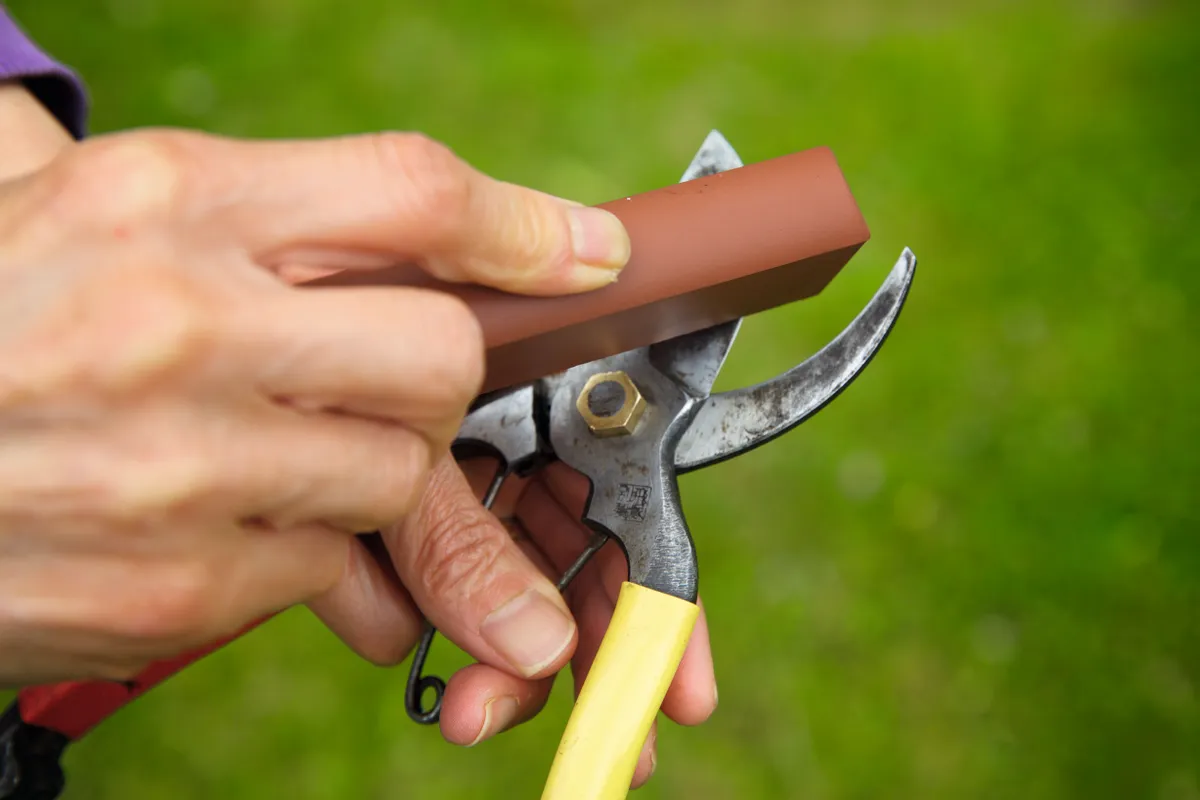Garden shears are essential tools for any gardener. They help keep your garden neat and healthy. Using them effectively is crucial. This guide will teach you how to do just that.
Choosing the Right Garden Shears
First, you need the right shears. There are many types, each for different tasks. Let’s explore the options.
Types Of Garden Shears
- Bypass Shears: These are the most common. They work like scissors. Perfect for live plants and soft stems.
- Anvil Shears: These have one sharp blade and one flat surface. Best for dead branches and hard stems.
- Pruning Shears: Ideal for small branches and twigs. They are also known as secateurs.
- Hedge Shears: These are larger and used for trimming hedges and bushes.
Factors To Consider
- Blade Material: Look for stainless steel or carbon steel. They stay sharp longer and resist rust.
- Handle Comfort: Choose handles that fit comfortably in your hand. Cushioned grips are a plus.
- Weight: Lightweight shears are easier to use for extended periods.
Using Garden Shears Safely
Safety is important when using garden shears. Here are some tips to keep you safe.
Before You Start
- Inspect Your Shears: Make sure they are clean and sharp.
- Wear Gloves: Protect your hands from cuts and blisters.
- Wear Safety Glasses: Shield your eyes from flying debris.
While Using Shears
- Use Both Hands: This gives you better control and reduces the risk of accidents.
- Cut at the Right Angle: Hold the shears at a 45-degree angle. This helps the plant heal faster.
- Don’t Force the Cut: If you need to use a lot of force, your shears might be dull or not suited for the task.
Effective Cutting Techniques
Using the right technique will make your gardening tasks easier and more efficient.
Pruning Small Branches
When pruning small branches, use bypass shears. Position the blade close to the main stem. Make a clean cut at a 45-degree angle.
Trimming Hedges
For trimming hedges, use hedge shears. Start at the bottom and work your way up. This ensures an even trim.
Deadheading Flowers
Deadheading is removing spent flowers. Use pruning shears for this. Cut just above the first set of healthy leaves.
Maintaining Your Garden Shears
Proper maintenance keeps your shears in good condition. Follow these steps to maintain them.
Cleaning Your Shears
After each use, wipe the blades with a damp cloth. This removes sap and dirt. For tougher residue, use soapy water and a brush.
Sharpening The Blades
Sharp blades make cleaner cuts. Use a sharpening stone or a file. Follow the original angle of the blade. Sharpen both sides evenly.
Oiling The Blades
Oiling prevents rust and keeps the shears moving smoothly. Apply a light coat of oil to the blades and pivot point.
Storing Your Shears
Store your shears in a dry place. Keep them out of the weather. Hang them up or use a storage case.

Credit: www.gardensillustrated.com
Common Mistakes to Avoid
Even experienced gardeners make mistakes. Here are some common ones to avoid.
Using Dull Blades
Dull blades make rough cuts. This can damage your plants. Keep your blades sharp.
Cutting Too Much
Don’t cut more than one-third of a plant at a time. This can stress the plant and slow its growth.
Ignoring Safety
Always wear gloves and safety glasses. Accidents can happen quickly.

Credit: www.amazon.com
Frequently Asked Questions
What Are Garden Shears Used For?
Garden shears are used for trimming and shaping plants, shrubs, and small trees in your garden.
How To Sharpen Garden Shears?
Use a sharpening stone or file. Maintain the correct angle to ensure the blades remain sharp.
What Are The Types Of Garden Shears?
Types include bypass shears, anvil shears, and hedge shears. Each is suited for specific gardening tasks.
How To Clean Garden Shears?
Clean shears with soapy water and a brush. Dry thoroughly to prevent rust and maintain longevity.
Conclusion
Using garden shears effectively is not hard. Choose the right shears for the job. Use them safely and maintain them well. Avoid common mistakes. With these tips, your garden will thrive.
